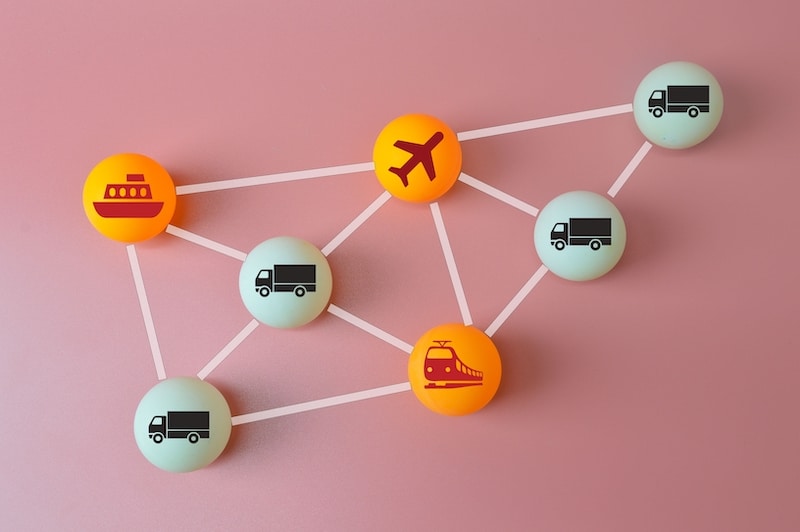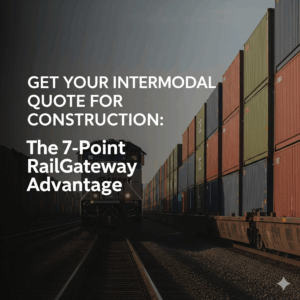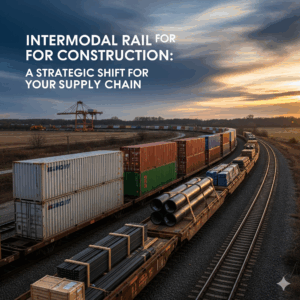In 2025, the ever-evolving landscape of global commerce demands shippers and supply chain professionals to be smarter and more strategic when selecting modes of transportation. Choosing the right mode or combination of transportation options is crucial for optimizing efficiency, reducing costs, minimizing environmental impact, and ensuring timely delivery. With a vast array of modes of transportation available—ranging from road, rail, air, sea, and intermodal combinations—understanding each mode’s strengths, limitations, and best applications is key to building a resilient and responsive supply chain.
As businesses continue to face increasing pressure to deliver goods faster and more reliably while managing escalating fuel costs and regulatory challenges, the role of modes of transportation in shaping supply chain success becomes more critical than ever. The right transportation mode can mean the difference between a smooth, cost-effective shipment and one riddled with delays, damage, or inflated expenses.
Why Modes of Transportation Matter More in 2025
The importance of selecting the optimal modes of transportation has skyrocketed in recent years. Advances in technology, rising consumer expectations, and shifts in global trade patterns have created new challenges and opportunities. Customers now expect faster delivery times, accurate tracking, and sustainable shipping practices, all while businesses strive to maintain competitive pricing.
In this dynamic environment, logistics managers must evaluate how each mode of transportation aligns with their supply chain goals. Road transportation offers unparalleled flexibility and last-mile access, but it can be costly for long distances or bulky cargo. Rail transportation excels at moving large volumes of freight overland efficiently, often with a smaller carbon footprint. Air freight provides speed for urgent shipments but at a premium price, while ocean shipping remains the most economical choice for large, bulky cargo crossing continents, albeit with longer transit times.
With intermodal transportation increasingly popular, combining different modes of transportation in a single supply chain journey allows companies to leverage the strengths of each mode. For example, goods might travel by ocean for the transoceanic leg, switch to rail for inland bulk movement, and then finish on trucks for last-mile delivery. This hybrid approach enhances overall supply chain efficiency and sustainability.
Key Considerations When Choosing Modes of Transportation
Selecting the best modes of transportation involves a careful assessment of multiple factors. Here are the primary considerations every shipper and supply chain professional should evaluate in 2025:
- Cost Efficiency: Balancing transportation expenses with service levels is fundamental. Some modes may offer lower freight costs but incur higher handling or storage fees.
- Speed and Transit Time: Meeting customer delivery expectations requires choosing modes that can guarantee timely arrival. Air freight is fastest, road offers flexibility, rail provides reliable transit times, and ocean is slower but cost-effective.
- Cargo Type and Volume: The nature of the goods being shipped — perishable, hazardous, bulky, or fragile — heavily influences mode selection. Temperature-sensitive cargo often requires refrigerated road or rail transport.
- Geographic Reach: Not all modes cover every route efficiently. Road transport excels in regional and last-mile delivery, rail covers major corridors inland, while sea and air are indispensable for international trade.
- Environmental Impact: Sustainability is a growing priority. Rail and ocean freight tend to have a lower carbon footprint compared to road and air, influencing companies seeking greener supply chains.
- Reliability and Risk: Weather disruptions, congestion, and regulatory checks vary by mode. Evaluating risks helps avoid delays and damage.
- Technology Integration: Modes that support real-time tracking, automation, and electronic documentation simplify logistics management and improve visibility.
Popular Modes of Transportation in 2025
Let’s break down the most widely used modes of transportation and their roles in modern supply chains:
- Road Transportation: Trucks and vans are the workhorses of freight delivery, providing unmatched door-to-door service and flexibility. In Canada and the U.S., trucking networks span vast distances, supporting local distribution and short-haul freight movement. Despite fluctuations in fuel prices and driver shortages, trucking remains vital due to its adaptability.
- Rail Transportation: Rail is ideal for transporting large volumes of freight cost-effectively over long distances. Canadian rail networks offer extensive coverage connecting major cities and ports. Rail freight also supports sustainability goals with lower emissions per ton-mile than trucks.
- Air Freight: When speed is critical, air transport is the go-to mode. Though more expensive, it’s indispensable for high-value, time-sensitive, or perishable goods. Air cargo hubs in Canada continue to expand, enhancing international connectivity.
- Ocean Freight: The backbone of international trade, ocean shipping moves the bulk of global goods. Container ships and bulk carriers provide affordable transport for large shipments, though transit times are longer and require careful scheduling.
- Intermodal Transportation: Combining two or more modes of transportation in a single journey is becoming increasingly common. Intermodal solutions optimize costs and service by leveraging the strengths of each mode. This trend is supported by technology advancements enabling smoother handoffs and better cargo tracking.
How to Evaluate Your Transportation Needs
In 2025, shippers must adopt a data-driven approach when choosing modes of transportation. Start by analyzing your supply chain’s specific requirements, including shipment frequency, volume, destination, and delivery urgency. Consider your budget constraints and sustainability targets alongside service expectations.
Engaging with experienced logistics providers and freight experts can provide valuable insights into the optimal transportation mix. For Canadian shippers, partners like RailGateway specialize in intermodal freight solutions that combine rail and truck transport, helping businesses achieve efficient, cost-effective, and environmentally friendly shipping.
Embracing Technology for Smarter Transportation Choices
Modern supply chains rely heavily on digital tools to optimize modes of transportation selection and management. Transportation Management Systems (TMS), real-time tracking, AI-powered route optimization, and electronic documentation help shippers improve decision-making and visibility across modes.
These technologies enable companies to monitor transit times, adjust to disruptions, and analyze performance metrics for continuous improvement. Leveraging such innovations in 2025 empowers shippers to maximize the benefits of their chosen transportation modes.
Choosing the right modes of transportation is a strategic imperative in 2025. By carefully assessing your unique supply chain needs and leveraging technology, you can build a shipping strategy that balances cost, speed, reliability, and sustainability. Whether your goods travel by road, rail, air, sea, or a combination, understanding each mode’s role ensures smarter, more efficient logistics that drive business success.
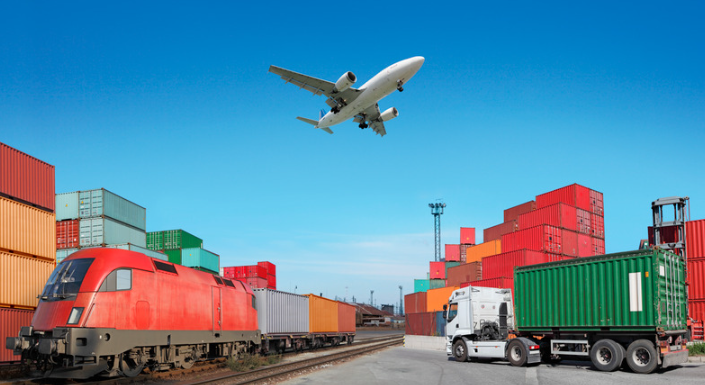
The 7 Modes of Transportation
There are 7 transportation modes you can use for supply chain transport. These are:
Air transportation or air transport
Rail transportation (passenger and freight)
Ship transport (also known as maritime shipping or maritime transportation)
Road transport or truckload
Water transport (barges and canals)
Intermodal transportation(a combination of road transportation and freight trains)
Multimodal transport (a combination of multiple modes of transportation methods)
What Are the Different Modes of Transport in Logistics?
There are four main modes of transport in logistics: truck, ship, train, and air. The best option for a particular shipment will depend on several factors.
Trucks are the most versatile of the modes of transportation, as they can be used for shipments of all sizes and types. Additionally, they come with different modes like truckload and less-than-truckload. However, trucking is also an expensive option. It can also be subject to traffic or inclement weather delays.
Ships are best suited for oversized shipments and international trade that need to be transported over long distances. Maritime transport is relatively slow but cost-effective.
Trains are an efficient and environmentally friendly option for shipping freight that needs to be transported over long distances, typically 1000+ km or 750 miles. Rail transport is also fast and reliable, but it can be expensive, and routes are limited. In addition, train schedules can be inflexible, making it challenging to coordinate shipments.
Industries shipping large volumes or requiring the movement of heavy goods preferably use railway and road transportation (also known as intermodal transportation) and shipping by sea over other modes. This method can accommodate larger materials, thus becoming an ideal alternative to air travel, which is better suited for parcel shipping and small packages.
Air freight is the fastest of the modes of transportation but also the most expensive. It’s best suited for time-sensitive shipments that need to be delivered to remote locations where trains and transport cars cannot service.
Now that we’ve gone over the different modes of transportation let’s take a closer look at the benefits and drawbacks of each one.
Benefits and Drawbacks of Truck Transportation
Truck transportation is the most popular mode of transport in North America, as it offers several advantages, including:
Trucks can transport shipments of all sizes and types.
Trucking is a door-to-door service, which means your shipment will be delivered directly to the recipient’s location.
Trucking is relatively fast and provides a high degree of flexibility when it comes to delivery times.
Trucks can transport shipments to and from remote locations that are not serviced by other modes of transport.
Packing, shipping, and offloading a truckload is easier than other transport modes.
There are fewer transport restrictions.
It is easier to track your cargo through GPS when using road transport.
It is highly accessible as every country has road transport modes compared to sea or rail transport.
However, trucking also has a few drawbacks, including:
With gas and petrol prices at an all-time high, trucking is an expensive mode of transport.
Trucking can be subject to travel restrictions and delays due to traffic or weather conditions.
It is not ideal for trans-global transportation of the supply chain.
There are size and weight limits on some roads.
There is a higher risk of accidents and mechanical problems compared to other modes of transportation.
Trucking is at the highest risk of invasion by criminals compared to rail, sea, or air transport.
Benefits and Drawbacks of Rail Transportation
Rail transportation is a fast and efficient way to move freight, and it offers a number of advantages, including:
Rail transport is faster and more cost-effective than trucking, making it ideal for long-distance shipments.
It is more energy-efficient, which makes it better for the environment.
Rail transport is more reliable and predictable than trucking, as trains run on set schedules.
Trains have a higher carrying capacity and are ideal for bulk cargo and large quantities of raw materials. There are huge containers that enable the carrying of oversized cargo.
This mode of transport has a low impact on the environment.
It supports intermodal transportation. However, you will need to have a reliable intermodal carrier.
Of course, this mode also has a few drawbacks, including:
Rail transport can be more expensive than trucking.
The routes for rail transport are limited, which can make it challenging to coordinate shipments.
Train schedules can be inflexible.
They are not ideal for door-to-door delivery services.
Cargo transported using a train requires additional transportation modes to reach its destination. This means you will need to have an intermodal contract.
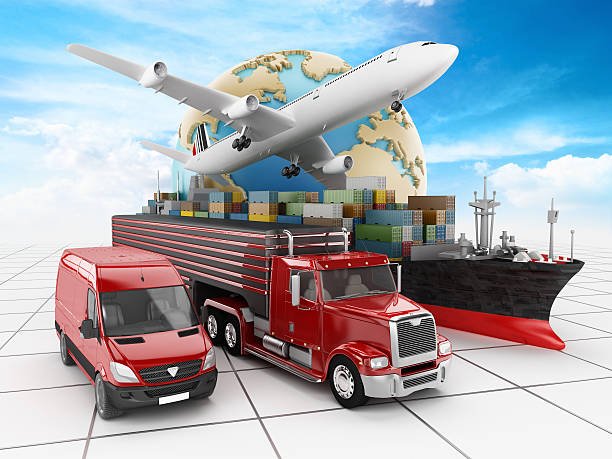
Benefits and Drawbacks of Maritime Transportation
Maritime transportation is a slow but cost-effective way to move freight, and it offers a number of advantages, including:
Maritime transport is the most economical option for shipping large volumes of freight.
Maritime transport is less likely to be affected by weather conditions than other modes of transport.
It is the best transportation mode for oversized and bulk cargo. There are large container ships for these purposes,
It offers the highest transport capacity.
There is little handling required in a ship.
Drawbacks of maritime shipping include:
Maritime transport is relatively slow, which can make it unsuitable for time-sensitive shipments.
Cargo ships are subject to travel restrictions.
The routes for maritime transport are limited, which can make it difficult to coordinate frequent shipments.
Ships are not always financially economical.
Marine transport can be inaccessible in some regions.
It is not ideal for fast or urgent transportation.
It requires another transportation mode to reach its destination; thus, you will need to run an intermodal terminal.
Benefits and Drawbacks of Air Transportation
Transport by air is the fastest way to move freight internationally, and it offers a number of advantages, including:
Air transport is the fastest option for freight transportation.
Air cargo is less likely to be affected by weather conditions than other transportation modes.
Air shipping is ideal for time-sensitive shipments.
Air transport is the most secure and least likely to be affected by criminals.
It operates on a time-sensitive and fixed schedule, thus limiting the chances of delay.
Air transport mode drawbacks:
Air transport is the most expensive of freight transport.
Air transport is subject to travel restrictions and delays due to air traffic control and passenger planes.
Environmental concerns.
It will require intermodal transportation. You will need to have a reliable intermodal transportation dealer.
How To Choose the Best Type of Logistics Transportation for Your Company?
There are a few factors you should take into account when deciding what type of transportation is best for your company, including:
The type of goods you need to ship
Your shipping budget
The time frame for delivery
The distance of the shipment
Whether or not you need door-to-door service
The frequency of shipments
Environmental concerns
Get the Best Transport Mode for Your Cargo
Weighing all these factors will help you decide which mode or combination of modes of transportation best suits your company’s needs.
In our next update, we’ll investigate how and when to use which transportation mode.
Ready to get started with intermodal transport? At RailGateway, we make finding the correct mode and Intermodal carrier for your freight simple, and our competitive pricing guarantees you the best rate for your shipment. Contact us and get started today with a free quote.
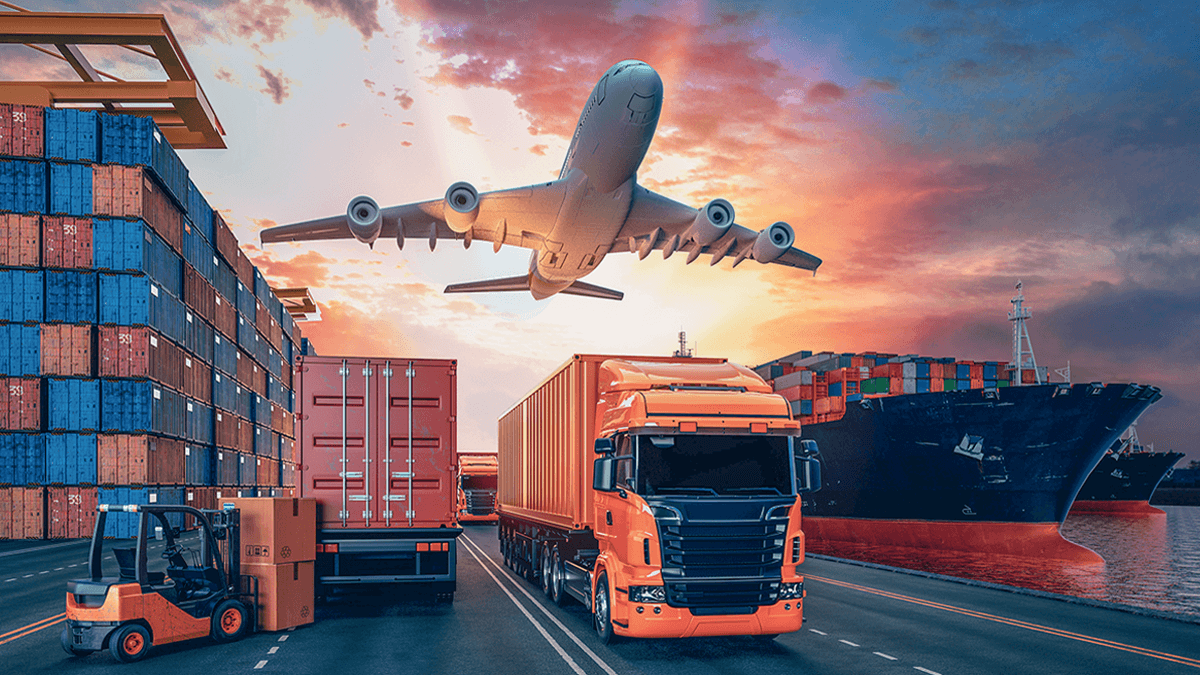
Conclusion
Choosing the right modes of transportation for your supply chain in 2025 is not just a logistical necessity—it’s a strategic advantage that can transform your entire shipping operation. As we’ve explored, each mode of transportation comes with unique strengths, limitations, and costs, and understanding these nuances is essential for crafting a seamless, cost-effective, and reliable supply chain.
The dynamic global landscape demands that shippers and supply chain managers continuously evaluate their transportation strategies. With rising fuel costs, evolving regulatory environments, increased consumer expectations, and a growing focus on sustainability, selecting the best modes of transportation has become more complex but also more rewarding when done right.
The Power of Combining Multiple Modes of Transportation
In 2025, multimodal and intermodal shipping solutions are at the forefront of supply chain innovation. Leveraging different modes of transportation in combination allows companies to capitalize on the advantages of each mode, resulting in better cost management, improved transit times, and reduced environmental impact.
For example, integrating rail freight into your supply chain can drastically reduce transportation costs and emissions over long distances, while trucks offer essential flexibility for last-mile delivery. Similarly, combining ocean freight with rail and truck transport can balance affordability and speed for international shipments moving into inland markets.
The flexibility and scalability provided by using multiple modes of transportation make it easier to respond to market fluctuations, supply chain disruptions, and changing customer demands. By staying agile and informed about the latest transportation trends, shippers can maintain a competitive edge in 2025 and beyond.
Technology: The Catalyst for Smarter Mode Selection
Technology is transforming how businesses select and manage modes of transportation. Tools such as Transportation Management Systems (TMS), real-time GPS tracking, AI-driven route planning, and blockchain documentation provide unprecedented transparency and control.
With these innovations, companies can optimize shipment routes, forecast delivery times more accurately, and reduce costly delays. Technology also enables enhanced communication across carriers and stakeholders, streamlining transitions between different modes of transportation and minimizing bottlenecks.
Adopting cutting-edge technology in your transportation strategy not only improves operational efficiency but also enhances customer satisfaction by providing real-time updates and reliable delivery windows.
Environmental Responsibility Through Smart Mode Choices
Sustainability is a critical factor shaping transportation decisions in 2025. Many companies now prioritize green logistics, actively seeking modes of transportation that reduce carbon footprints without compromising service quality.
Rail and ocean freight, for example, offer more environmentally friendly options compared to road and air shipping. Using these modes as part of a multimodal strategy supports corporate sustainability goals, helps comply with tightening environmental regulations, and appeals to eco-conscious consumers.
Investing in green transportation solutions also prepares businesses for future regulatory changes and potential cost savings from carbon taxes or emissions trading schemes.
Why RailGateway is Your Ideal Partner for Navigating Modes of Transportation
Choosing the best modes of transportation can be challenging, especially when balancing cost, speed, reliability, and sustainability. That’s where RailGateway comes in. As a leader in intermodal freight and multimodal logistics solutions, RailGateway helps Canadian businesses optimize their supply chains by offering expert guidance on transportation modes and innovative, flexible shipping options.
RailGateway’s deep expertise in rail freight combined with trucking and other transportation modes means you get tailored solutions that fit your unique shipping needs. Whether you’re looking to reduce costs with rail intermodal services, improve delivery times with smart last-mile trucking, or integrate multiple modes for complex shipments, RailGateway has you covered.
Their advanced technology platform offers real-time tracking, transparent pricing, and seamless coordination across carriers, ensuring your goods move efficiently and reliably. RailGateway’s commitment to sustainability also helps your business meet environmental goals while maintaining high service standards.
Taking Action: How to Optimize Your Modes of Transportation Strategy
To fully harness the benefits of the right modes of transportation in 2025, begin by conducting a thorough analysis of your current supply chain. Evaluate shipment volumes, delivery timelines, cost constraints, and sustainability targets. Identify where inefficiencies or risks exist, and consider how combining different transportation modes could address these challenges.
Partnering with logistics experts like RailGateway can accelerate this process. Their team can help assess your freight requirements, recommend optimal mode combinations, and implement technology-driven solutions to streamline your operations.
Continuous monitoring and data analysis are also essential. By tracking key performance indicators across your chosen transportation modes, you can adapt quickly to changing market conditions and maintain a resilient supply chain.
Final Thoughts: Smart Mode Selection for Sustainable Growth
The future of supply chain success in 2025 hinges on your ability to choose and manage the best modes of transportation for your business. As costs rise and customer demands evolve, companies that master multimodal logistics will enjoy enhanced efficiency, lower emissions, and improved service quality.
Whether you’re shipping locally, nationally, or internationally, embracing a smart, technology-enabled, and sustainability-focused transportation strategy is crucial. With the expert guidance and innovative solutions from RailGateway, you can confidently navigate the complexities of modern freight movement and position your business for long-term growth.
Contact RailGateway for Expert Transportation Solutions
When it comes to selecting the perfect modes of transportation for your supply chain, RailGateway stands ready to assist. Visit railgateway.ca today for a free quote or to speak with one of our intermodal experts. Let RailGateway help you build a smarter, more efficient, and greener supply chain in 2025.

